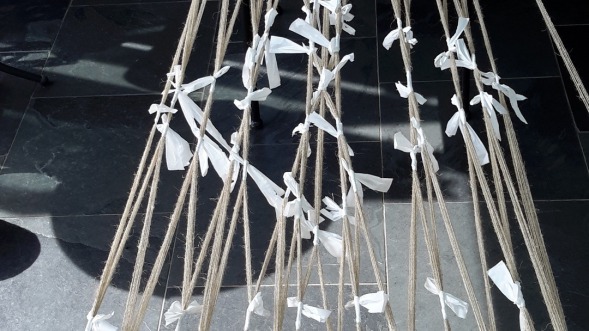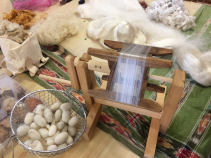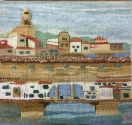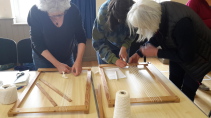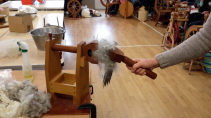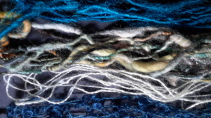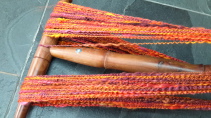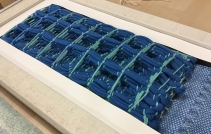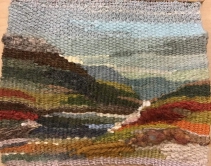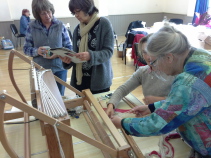September 2018 Ikat Warp Dyeing Day
Jane Deane led an Ikat warp dyeing workshop where members made up warps containing bundles of warp yarns that were wrapped in protective plastic to stop dyes affecting the original warp colour. You can use strips of plastic bags, ordinary string, strips of cling film, etc.
If you want a random effect on a warp, then you wet the warp, soak it in the appropriate fixer - vinegar for protein fibres, washing soda and salt for cellulose dyes - and apply small amounts of dye
in two or more colours, remembering that where the colours overlap they will create a third. Then you gently squish the dye through the warp to ensure it is where you want the colour, wrap it in
cling film and steam it.
